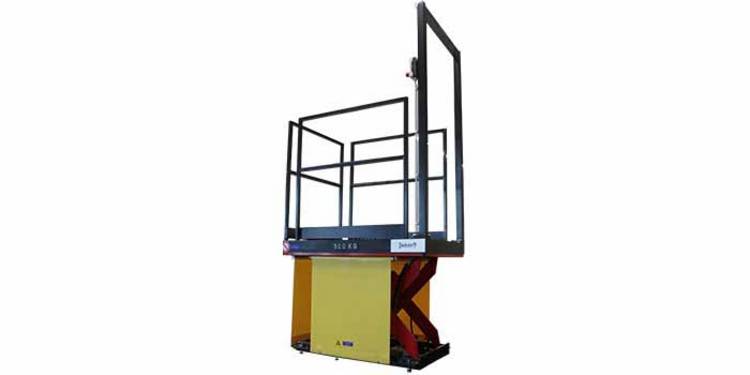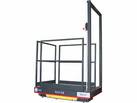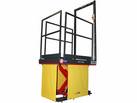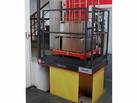An extension in a commercial kitchen necessitated the bridging of a difference in level between an old and a new building. The customer chose our loading lift table for this purpose. It is used to transport kitchen utensils and food trolleys ...
Why wasn’t a ramp used?
The main reason for the decision against a ramp was because of the size of the ramp. With a height difference of 760 mm and a gradient of 6 ° the ramp would have been 7.25 m long. On the one hand there was no room for a ramp with such dimensions, on the other hand it would be very exhausting to push the heavy food trolleys over such a distance.
The layout of the rooms also complicated matters. On the lower level there is a door directly next to the height offset. This means the ramp would block the passage to the next room. Therefore, another solution had to be found: the loading lift table.
What is the advantage of the loading lift table over the ramp?
The first obvious reason is the more compact design. It only takes up as much floor space as is needed to transport the kitchen utensils. Compared to 7.25 m, its length of 1.4 m is immensely space saving. Furthermore, the food trolleys can be conveniently raised or lowered to the desired level at the push of a button, making it unnecessary for employees to use their own strength to push the food trolleys up and down.
As already mentioned, there is also a door directly to the side of the lift table. To allow the continued use of the adjoining room without hindrance, the platform were fitted with insertable railings. This allows the railings to be removed in the lowest lifting position so that loads can be easily transported over the loading lift table to or from the adjoining room. Of course, there is a risk that the railings will be forgotten when the lift table is raised. To prevent this from happening, the railings are electrically queried. This means that the scissor lift table can only be moved once the railings have been reinserted. A safety measure against falling from the platform.
Commercial kitchen – doesn't the loading lift table have to be made of stainless steel?
Hygiene plays an important role in a commercial kitchen. Not only the utensils, but the furnishings must also be easy to clean and disinfect. One reason why lift tables in kitchen areas are often made of stainless steel. However, this loading lift table, although it is being used in a commercial kitchen, is not made of stainless steel. It was painted with a two-component polyurethane coating. The fact that the loading lift table is not located directly in the commercial kitchen but in the goods receiving area and that it has no direct contact with the food made this possible. A stainless steel version would therefore only have added unnecessary cost to the project.






